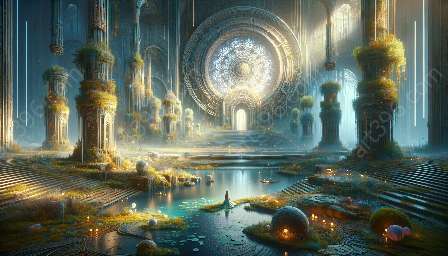3D modeling plays a crucial role in various fields, including concept art. Understanding the key differences between 3D modeling for concept art and other applications is essential for artists and designers. In this article, we will delve into the unique aspects of 3D modeling for concept art and explore how it differs from other uses of 3D modeling.
3D Modeling for Concept Art
Concept art involves creating visual representations of ideas and concepts for various industries, including entertainment, video games, and product design. 3D modeling for concept art focuses on bringing these ideas to life in three-dimensional space, allowing artists to visualize and refine their concepts with depth and detail.
Key Differences:
- Emphasis on Creativity and Expression: Unlike other applications of 3D modeling, where precision and accuracy are paramount, 3D modeling for concept art prioritizes creativity and expression. Artists have the freedom to exaggerate proportions, experiment with styles, and evoke specific moods or atmospheres.
- Rapid Iteration and Exploration: Concept art often involves rapid ideation and iteration. 3D modeling for concept art enables artists to explore multiple design variations swiftly, allowing for quick decision-making and concept refinement.
- Focus on Narrative and Storytelling: In concept art, the 3D models serve as visual storytelling elements. Designers can use 3D models to convey narratives, evoke emotions, and immerse viewers in the intended narrative world.
- Integration with 2D Art Techniques: Concept artists often combine 3D models with traditional 2D art techniques to achieve a distinct visual style. This integration allows for a seamless blend of digital and traditional artistic methods.
Other Applications of 3D Modeling
While 3D modeling for concept art focuses on artistic expression and idea visualization, other applications of 3D modeling serve diverse purposes across industries.
Key Differences:
- Precision and Realism: Industries such as architecture, engineering, and product design demand precise and realistic 3D models for prototyping, visualization, and technical analysis.
- Functional Considerations: 3D modeling for engineering and manufacturing emphasizes functional aspects, such as material properties, physical simulations, and manufacturability, which are essential for product development and manufacturing processes.
- Physical Accuracy and Simulation: Fields like medical imaging and scientific research rely on 3D modeling for accurate representation of anatomical structures, simulation of physical phenomena, and analysis of scientific data.
- Technical Complexity and Optimization: Industries like visual effects and animation require intricate 3D models optimized for complex simulations, rendering, and integration with visual effects pipelines.
Understanding these differences highlights the unique requirements and approaches associated with 3D modeling for concept art and other applications. By recognizing these distinctions, artists and designers can effectively leverage 3D modeling to fulfill their creative visions across various artistic domains.

